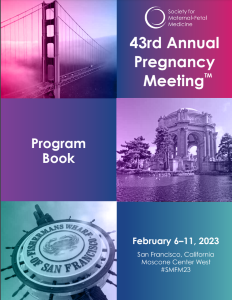Category: Labor
Poster Session IV
(1008) Melatonin restores the macrophage via p38-Yap1 signaling to prevent preterm birth in a murine model
The aim of this study was to elucidate the underlying mechanism by which melatonin prevents preterm birth via modulating macrophage polarization at the maternal-fetal interface (MFI)
Study Design:
Phosphate-buffered saline (PBS) or lipopolysaccharide (LPS) 25 ug in 100 ul PBS, was injected in the middle of the first and second amniotic membranes in 16.5 dpc ICR mice. Melatonin was injected intraperitoneally 30 min before the LPS injection. To deplete macrophages, clodronate- or PBS-loaded liposomes were injected in previous mentioned position. To analyze the population of depleted macrophages, the uterus, decidua, placenta, and maternal peripheral blood were collected followed by flow cytometry. Macrophage-specific Yap1-knockout mice were bred by mating Yap1f/f mice with LyzMcre/cre mice. Bone marrow cells were isolated from tibias and femurs of Yap1f/f or Yap1ΔM/ΔM mice.
Results:
Administration of melatonin reduced the rates of preterm birth and fetal death. The genes related M2 macrophage were significantly decreased in human patients with preterm birth. When clodronate liposome was directly given to the uterus of pregnant mice to deplete macrophages, the preterm birth spontaneously occurred without LPS. Melatonin significantly increased the M2 macrophage, restoring the M1-biased macrophages in the uterus of preterm mice. Melatonin pretreatment significantly reduced the LPS-induced phosphorylation of p38 MAPK, p65 of NF-kB, and YAP1(Y357), all of which are related to the M1 features, in macrophages in vitro. Melatonin pretreatment significantly increased the degradation of YAP1 via increasing the phosphorylation of YAP1 (S127). Based on the lack of induction by Yap1-depleted macrophages, LPS failed to induce preterm birth in most macrophage-specific Yap1-knockout mice,maintaining the balance of M1/M2 ratio in the uterus after LPS injection. Using multiple genetic and molecular approaches, we demonstrated Melatonin restores the M1-biased macrophage via p38-Yap1 signaling to prevent preterm birth in a murine model with intrauterine inflammation
Conclusion:
- HC
Hee Young Cho, MD
Department of Obstetrics and Gynecology, Bundang CHA Hospital, CHA University, Pocheon-si, Korea
Seongnam, Kyonggi-do, Republic of Korea .jpg)
Ji Yeon Lee, MD, PhD
Associate Professor
CHA University School of Medicine
Seongnam, Kyonggi-do, Republic of Korea- SP
So Hee Park, BS
CHA University
Gyeonggi-do, South Korea, Republic of Korea - MP
Mira Park, PhD
CHA University
Gyeonggi-do, South Korea, Republic of Korea - HS
Haengseok Song, PhD
CHA University
Gyeonggi-do, South Korea, Republic of Korea

.png)
